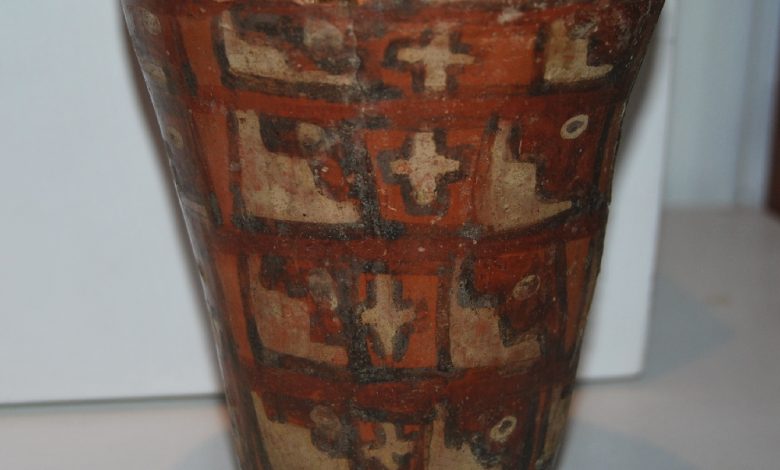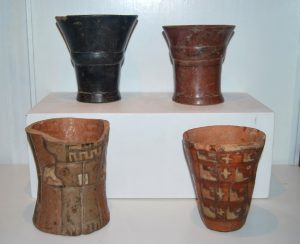The Great Ceremonial and Utilitarian Vessel, the Q’ero, Has Lots of Meaning.

The beautiful q’eros have a long history of importance in Cuzco. Q’ero means wood. They were wooden cups that the natives and the mestizos always made in pairs. As a result, the couple of glasses together represented Andean duality. They cups came in two forms, one was utilitarian and the other ceremonial. The latter were better worked and had decorative designs enclosing a message about agriculture, herding, history, the religious customs, or other meanings.
Even if there were not any formal writing in the Inca period, such as in Europe, the iconographic decorations of the q’eros were considered a kind of language. Thanks to them scholars have some information about how life was in Inca times.
It is thought that the making of q’eros began in the lowlands, in the jungle around Vilcabamba, the last Inca bastion. It seems this is the case because of the predominance of jungle elements in the iconography as well as the kind of wood from which the q’eros were made, chonta. Over time the iconography changed to reflect more tocapu designs and they were made of other materials, such as metals and ceramics. The tocapu are idiographic designs in a geometrical form found in Inca design and weavings.
The pictographic decoration found on the q’eros is typically in the Cuzco style and is Incaic. The predominant colors are orange, yellow, brown, dark ochre, lapislazuli, red, and dark green among others.
Based on the type of decoration, q’eros are into three categories based on type of decoration. The first has geometric designs. The second carries floral designs, such as the kantu flower. This flower is symbolic of Inca times and is currently considered Peru’s national flower. The third are of complete scenes, such as agricultural scenes of sewing and harvest, of group work, of war, hunt, ceremonies to the deities, and include elements such as rainbows, mountains, and rain. In these scenes you can also see chunchos, jungle Indians, chankas, a nearby warrior tribe, Qollas, natives of the high plateaus, and of animals such as the falcon, the fox, the hummingbird, mountain lions, bears, deer, serpents, and condors.


Besides the utilitarian or ceremonial use given to the q’eros, from history we know that in 1780, the year of the rebellion of José Gabriel Túpac Amaru, the q’eros played an important role. They served to carry messages in their iconography that were independentist and helped carry out the revolution.
We can conclude by observing that the q’eros were important cultural and historical elements that carried our and continue to carry out and important role in the life of the people of Cuzco.
Note: There are different spellings of the word q’ero depending on the pronunciation and concerns of every author. It can variously be kero, quero, or qero, as well as q’ero. This last emphasizes the glottal stop following the back consonant reflected as q.




